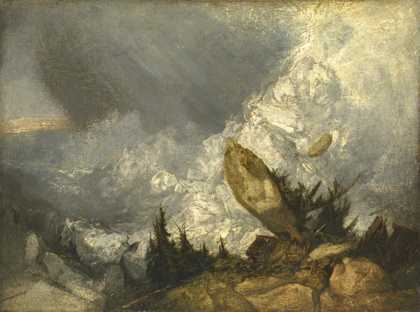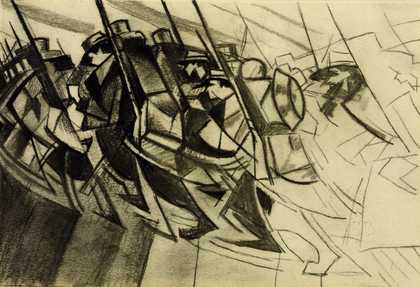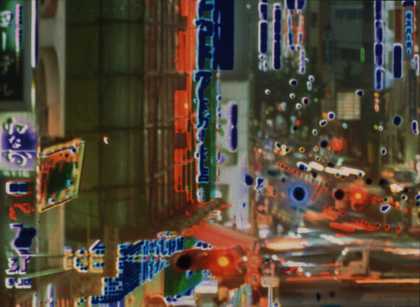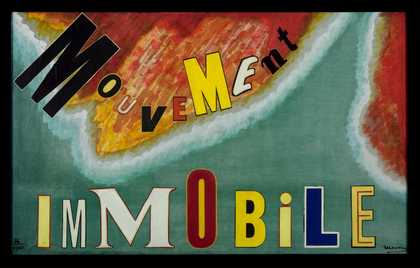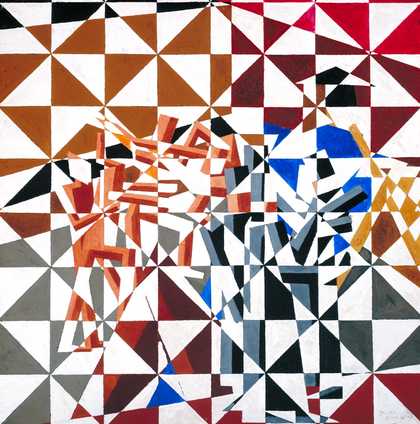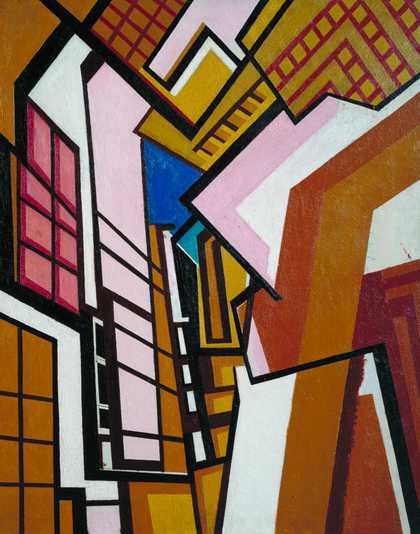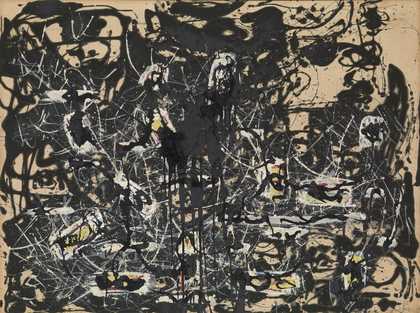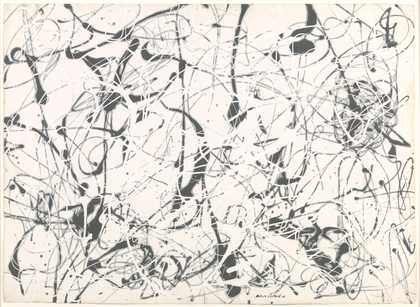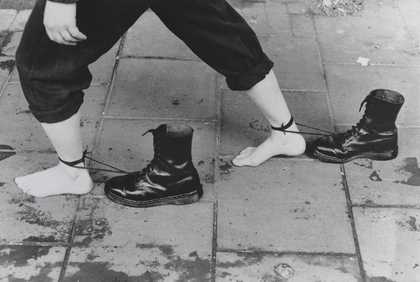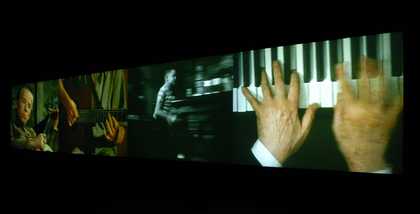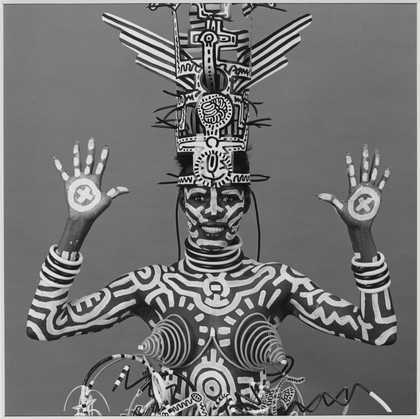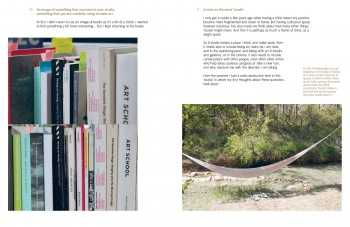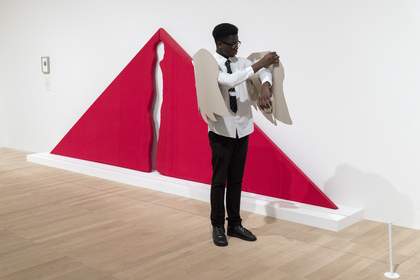Capturing speed: Futurism and vorticism

Giacomo Balla
Abstract Speed - The Car has Passed (1913)
Tate
Futurist and vorticist artists experimented with ways of capturing how dynamic the modern world was becoming. New technologies fascinated them. They were excited by how speedily life and technology were developing in the early twentieth century.
The futurist manifesto proclaimed:
We declare…a new beauty, the beauty of speed.
Futurist artists experimented with abstracting reality. They worked with dynamic shapes and lines in order to suggest movement. Giacomo Ballà was a leading figure in the group. He believed that the power and speed of machines like cars were the outstanding features of the modern age. He aimed to express this idea in works such as Abstract Speed – The Car has Passed 1913. The green and blue forms shown in this painting suggest a landscape seen from a moving vehicle. In Umberto Boccioni’s sculpture Unique Forms of Continuity in Space 1913 the figure is aerodynamically deformed by speed as it surges forwards unstoppably.
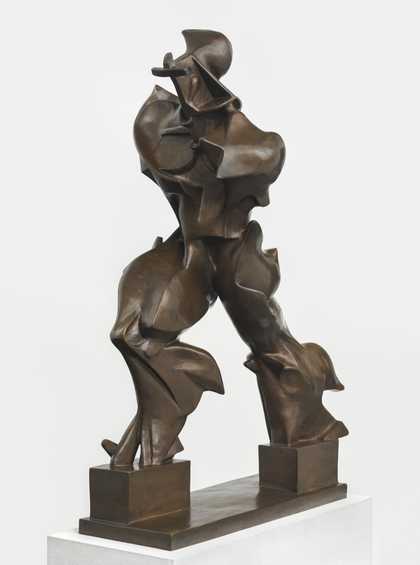
Umberto Boccioni
Unique Forms of Continuity in Space (1913, cast 1972)
Tate
The vorticists were a group of artists who had similar ideas to the futurists. They also wanted to capture the modern world and express the exciting buzz it gave them. Artist David Bomberg wrote:
The new life should find its expression in a new art, which has been stimulated by new perceptions. I want to translate the life of a great city, its motion, its machinery, into an art that shall not be photographic, but expressive.
Ju-Jitsu c. 1913 was based on a simple figure drawing. The artist layered a grid over the drawing to break the composition up into geometric sections. He disrupted the regular grid-pattern to suggest the dynamic movements of the ju-jitsu athletes.

Helen Saunders
Abstract Multicoloured Design (c.1915)
Tate

Helen Saunders
Abstract Composition in Blue and Yellow (c.1915)
Tate
Expressing movement and dynamism
Wassily Kandinsky believed that colours and lines can express emotional and spiritual values. He used them to suggest the dynamism of modernity, by combining expressive diagonal lines with dabs and washes of colour. Other artists have also used expressive lines and marks to suggest and create movement. Look at Frank Auerbach’s landscape views of Primrose Hill. The scrawled, expressive staccato lines produce a sense of the blustery wind blowing the sky and trees. You can feel the frenzied movement.
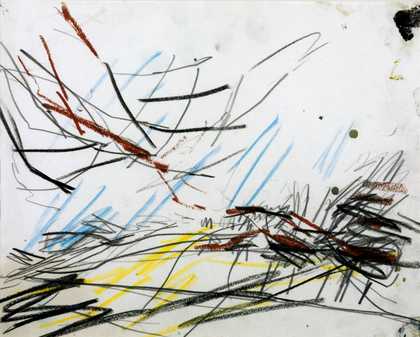
Frank Auerbach
Working Drawing for ‘Primrose Hill’ (1968)
Tate
Abstract expressionist artists Jackson Pollock and Willem de Kooning worked in a spontaneous way to create dynamic paintings. Pollock famously placed his canvases on the ground to work on. He danced around them pouring paint directly from the can or trailing it from the brush or a stick. He also listened to jazz music while painting. Pollock felt this helped to orchestrate a sense of movement and rhythm in his work. Because of how physical creating the works was, these artists are often referred to as action painters.
Damien Hirst also uses the application of paint to create a sense of movement. Standing on a ladder above horizontal canvases attached to a spinning motor, he drops paint onto the canvases. This creates dynamic splashy colourful images. He sometimes presents these attached to a motor. As well as using movement to create them, they move while you watch them!
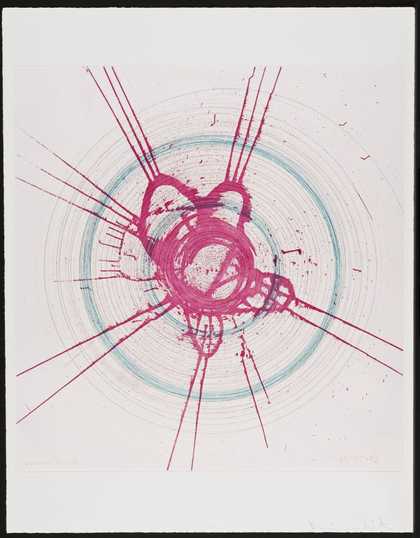
Damien Hirst
Global a Go-Go - for Joe (2002)
Tate

Damien Hirst
Beautiful, childish, expressive, tasteless, not art, over simplistic, throw away, kid's stuff, lacking integrity, rotating, nothing but visual candy, celebrating, sensational, inarguably beautiful painting (for over the sofa) 1996
Household gloss on canvas and electric motor
© Damien Hirst and Science Ltd. All rights reserved. DACS 2012. Photographed by Prudence Cuming Associates
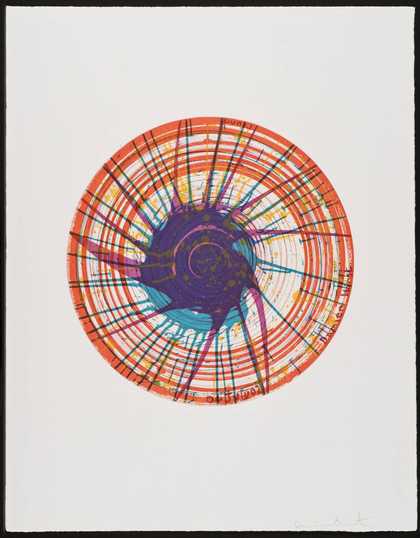
Damien Hirst
Round (2002)
Tate
Cartoonists make use of lines and marks to suggest a sense of movement. Think about speed lines or clouds of dust as figures or vehicles make a hasty exit). Pop artist Roy Lichtenstein borrowed from the language of cartoons in his paintings and prints. Works such as Whaam! 1963 are explosive and action-packed.
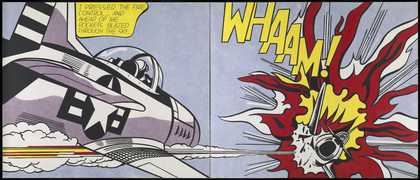
Roy Lichtenstein
Whaam! (1963)
Tate
George Condo uses cartoon techniques and imagery in his humorous portraits and pictures. They look like a tangle of Picasso-like abstractions. His works borrow references from pop culture, music and graffiti. The lively and expressive lines are reminiscent of those seen in futurist works. They suggest everything from a head turning, like in Interrelated Portrait 1999, to utter chaos, as in The Butcher’s Remorse 2009.
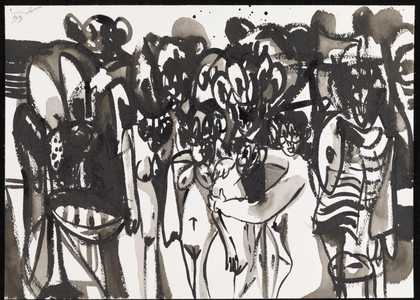
George Condo
Constellation of Figures (1999)
Tate
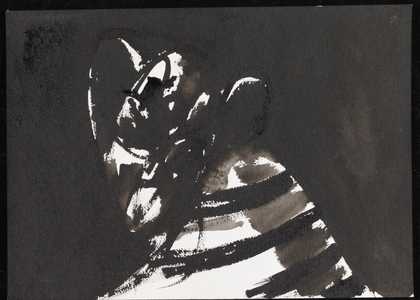
George Condo
Study for the Escaped Hippie (1999)
Tate
Op art and the perception of movement
Line and colour doesn’t have to be expressive and gestural to suggest movement. Op artist Bridget Riley explores the dynamic potentialities of optical phenomena. She carefully organises and manipulates colours, shapes and lines. Her paintings and prints have a disorienting physical effect on the eye. They appear to move as you watch them. In Hesitate 1964, the gradual changes in the shapes of the grey forms suggests a wave or fold created when you shake a piece of fabric. The wavy lines of Fall 1963 seem to be in perpetual falling motion.
Kinetic artworks
So far we have looked at art that suggests movement. What about art that actually moves?
Artists first began to experiment with kinetic art at the beginning of the twentieth century. Naum Gabo wanted to make sculpture which explored both space and time. For Standing Wave 1919-20 a motor oscillates a strip of metal. Alexander Calder exlored the natural movement of air in a space and creating the first ever mobiles from around 1930.
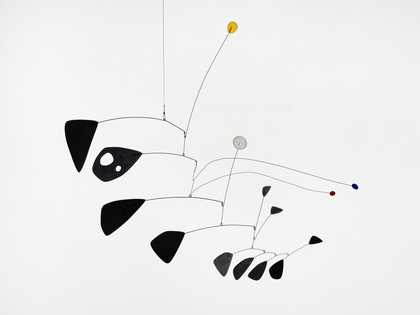
Alexander Calder
Antennae with Red and Blue Dots (c.1953)
Tate
Artist duo Fischli and Weiss made use of chain reactions to create their kinetic artworks. Watch this video excerpt from The Way Things Go and see the causal chain of a precarious 70-100 feet long structure made ot move by a rotating bin bag!
Performance and interactive art
Performance art is art when the artist uses their own body as the medium. They perform an action or series of actions which become the artwork. Performance art is sometimes carefully planned and scripted but can also be spontaneous and random. Watch this introduction to performance art:
This film file is broken and is being removed. Sorry for any inconvenience this causes.
Interactive art also involves action and movement but it is the viewer who becomes the performer. In 1971 artist Robert Morris was invited to create an artwork for Tate. The work he made, Bodyspacemotionthings 1971 was an interactive installation. It was the first work of art shown at Tate that you could play on! Visitors were encouraged to climb, balance, crawl and roll on the huge ramps, tunnels, platforms and beams included the installation. Tate recreated Bodyspacemotionthings at Tate Modern in 2009 and recorded the whole thing! Watch people interacting with the objects in this video of the event.
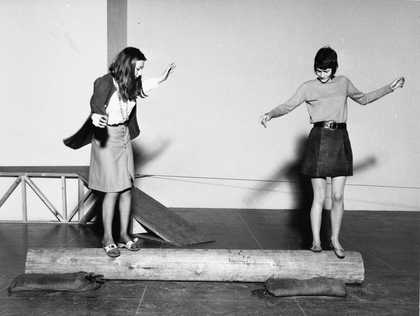
Installation view of the Robert Morris retrospective, Tate Gallery, 1971
Tate
© Robert Morris
Experimental film and video
Artists began to experiment with film as an art medium as early as the 1920s. Oskar Fischinger’s dazzling films combined abstraction with the new technology of cinema. These works were like fast-moving versions of abstract paintings. Len Lye created abstract films without using a camera. For films such as A Colour Box 1935, he painted vibrant abstract patterns directly onto the film itself, (a process called direct film). They were then synchronized to music so the abstract forms looked as if they were dancing.
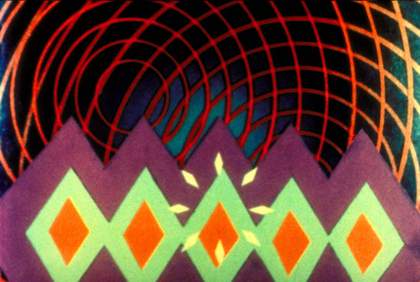
Oskar Fischinger
Allegretto 1936–43
© Fischinger Trust courtesy Center for Visual Music
Since the 1960s video has been a popular medium in art. Artists such as Bruce Nauman and Steve McQueen use it capture their own (or others’) performances or actions. Steve McQueen’s Bear 1993 shows two men wrestling. The men are locked together in a physical sequence which changes from confrontation to embrace, from dance into fighting and back again. There seems to be no reason or resolution to the confrontation. The figures keep filling the screen and blocking out the light. This emphasises their movement as well as reflecting the aggressive nature of the action.

Bruce Nauman
Violent Incident (1986)
Tate
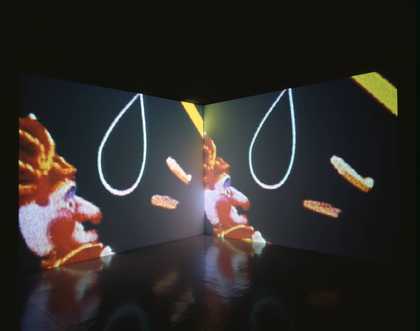
Susan Hiller
An Entertainment (1990)
Tate
Susan Hiller's video and sound installation An Entertainment 1990 uses recordings of scenes from traditional English ‘Punch and Judy’ puppet shows. When displayed, it uses all four walls of the gallery space. This causes the viewer to turn constantly in the space to keep up with its fast changing images – making them part of the movement of the artwork.
Many contemporary artists, including Christian Marclay, Mark Leckey and Elizabeth Price use ‘found’ footage and sampling techniques to create their videos. Different technological histories are digitally montaged in Elizabeth Price’s multi-layered films. In this video she talks about her work THE WOOLWORTHS CHOIR OF 1979 2012, which was shown in the 2012 Turner Prize exhibition:
This film file is broken and is being removed. Sorry for any inconvenience this causes.
have a go
We’ve pulled together some ideas to help you get started:
- Explore line, mark making and colour to suggest a sense of movement. Experiment with ways of applying paint…splashing, dripping, trailing dabbing…or moving around while you paint!
- Try working while listening to music like Jackson Pollock. Or like Damien Hirst you could experiment with ways of adding paint to a moving canvas! Look at gestural art in Tate’s collection for inspiration.
- Look at the ways graphic artists and cartoonists suggest movement. Could you adapt this language of marks and lines and repeated overlapping images to add movement and dynamism to your artwork?
- Research op art. Investigate how shapes, lines and careful composition can create optical illusion and suggest movement. You could use graphics software on your computer to manipulate, repeat and distort lines and shapes. Use Bridget Riley as inspiration.
- Mobiles are a simple way of creating kinetic art that explores the movement of forms and lines in space.
- Experiment with causal reactions like Fischli and Weiss. This doesn’t have to be elaborate. A poured bottle of water can cause a balanced tray or plastic dish to tip over…what happens next? Record your experiments on video
- Use video or formats such as GIFS to create simple animations. These could be abstract such as Fischinger’s moving shapes and lines or you could animate found objects or images. Check out the 1840s GIF Party for inspiration
- What about your own actions or movements? Record yourself dancing or moving around a room, or like Bruce Nauman repeating certain actions. Use furniture or ordinary objects you have around you and work out different ways of interacting with these – to create an interactive performance artwork. Use Robert Morris’s Bodyspacemotionthings as inspiration or explore the performance work of Lucy Gunning

